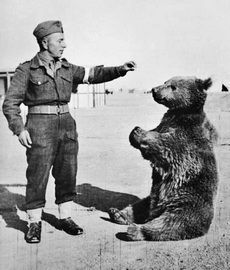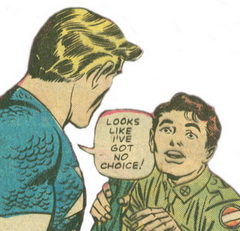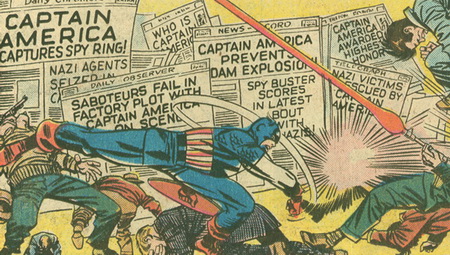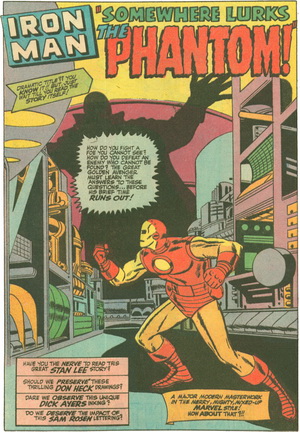
Published: March, 1965
Script: Stan Lee
Pencils: Jack Kirby
Inks: Frank Ray
Letters: Art Simek
This is probably going to read like one of those “Compare and Contrast” essays your teachers always asked you to write in high school. Because this month’s installment of Captain America brings us all the way back to World War II days for a re-telling of his origin story. This story originally appeared in March 1941, and is now recapped (pun intended) 14 years later in the March 1965 issue of Tales of Suspense #63. How could I possibly resist the urge to compare and contrast?
Upon reading the March 1965 account, one serious matter jumped out at me which I found particularly disturbing, so I went back to the original 1941 tale for additional information. Maybe I’m being too critical of what is, after all, a simple form of entertainment, but I can’t shake any of this out of my mind. So instead, I’ll share it.
INTRODUCING BUCKY BARNES
First, in both versions of this story, we learn that when Bucky’s father died in training, Fort Leigh adopted him as camp mascot. To which I say…WHAT?? Really? A human child in a role usually reserved for animals?
I love this story about Polish troops during World War II that adopted a cigarette-smoking, beer-drinking bear cub as their mascot, but during my online research could not find anything regarding human children fulfilling the same role (excluding, of  course, the cigarette-smoking and beer-drinking, though…who knows?) human mascots? Was that really a “thing” that happened back then? Or did it only happen in the Marvel Universe?
course, the cigarette-smoking and beer-drinking, though…who knows?) human mascots? Was that really a “thing” that happened back then? Or did it only happen in the Marvel Universe?
Several questions immediately arise: How long ago did Bucky’s father die? How old was Bucky at the time? And where is his mother? Under what circumstances was this boy completely orphaned with nowhere else to go (no grandparents? Aunts? Uncles?) and no other viable options, other than to become the camp mascot at a military installation?
And furthermore, where was Child Protective Services? Or was that not a “thing” back in 1941? In the 1940’s, if children were irretrievably orphaned, did the government step in and assign them to an orphanage, or was their fate simply left up to the kindness of strangers?
Or maybe Bucky’s new role as camp mascot was the result of the government stepping in. But if so…who exactly is his guardian? Who is making decisions regarding his welfare? I would think it would be the commander of the base.
One thing I know for sure, it is not Private Steve Rogers. And yet, when Bucky bursts into Steve’s tent and finds him slipping into his Captain America uniform, after an understandably awkward moment, a partnership is formed.
There are so many things wrong with this scene.
READY OR NOT…
 First, I can’t get over the fact that Rogers’ immediate reaction upon being discovered is to say he was careless and “I should have faced the tent entrance.” How would that have changed anything? What he actually needed was a lock, or at least a screen to change behind. No, I take that back, what he really needed was a readily available plausible alibi for anyone who might have walked in. “Oh! I’m…uh…going to a costume party!” Or “My dear old grandmother suffers under the delusion that because I’m in the Army, I must be Captain America, and she just mailed me a new suit to wear when my other suit is in the laundry.” Living in an environment of tent flaps and no locks, why not prepare for the inevitable? Or is he so addicted to TRUTH, justice and the American way that he can’t tell even a little fib, even to a pesky teenager?
First, I can’t get over the fact that Rogers’ immediate reaction upon being discovered is to say he was careless and “I should have faced the tent entrance.” How would that have changed anything? What he actually needed was a lock, or at least a screen to change behind. No, I take that back, what he really needed was a readily available plausible alibi for anyone who might have walked in. “Oh! I’m…uh…going to a costume party!” Or “My dear old grandmother suffers under the delusion that because I’m in the Army, I must be Captain America, and she just mailed me a new suit to wear when my other suit is in the laundry.” Living in an environment of tent flaps and no locks, why not prepare for the inevitable? Or is he so addicted to TRUTH, justice and the American way that he can’t tell even a little fib, even to a pesky teenager?
WHOSE IDEA IS THIS, ANYWAY??
Sigh…I just had to get that out of the way. But now we come to the first major discrepancy between the two accounts of this fateful event. In 1941, when Bucky discovers Steve Rogers’ secret identity, it is Rogers himself who immediately declares, “From now on we must both share this secret together…that means you’re my partner, Bucky!” In 1965, Bucky comes up with the idea, but Rogers readily (or reluctantly? It’s hard to tell…) agrees, “Looks like I’ve got no choice.”
It’s more than a subtle difference, and I give the 1965 writers credit for making the change. Because in no universe ever is it appropriate for an adult to enlist a child in a series of dangerous activities. Granted, it’s still not cool that that Rogers succumbs to young Bucky’s insistent demands with “Looks like I’ve got no choice.” This gives the impression not only that Rogers considers the secrecy of his alter ego more important than the welfare of a minor, but also that he and Bucky have now entered into a sort of blackmail scenario. But it somewhat takes the edge off Private Steve Rogers’ complete lack of social responsibility; in any universe, at any time, he should know better.
 My 21st century sensibilities have now been stretched to the limit.
My 21st century sensibilities have now been stretched to the limit.
Furthermore, it seems no Army brass is involved in this decision, which would be highly unlikely, especially for straight arrow Captain America, who always does things “by the book.” Of course, he’s now forced into a situation where his secret identity has been uncovered, and in the Marvel comic book world of (most) superheroes, maintaining secret identity is paramount to all else. But again, the time to plan for that possibility is BEFORE you change into your superhero costume in a TENT with no planned ALIBI. And if you fail to plan, and risk exposure as a superhero, the solution, above all else, should not be putting a child at risk.
AND EVERYONE IS OKAY WITH THIS…?
Later in the story, we see Cap and Bucky fighting crime and Nazis, and newspaper headlines are boldly celebrating their victories. Once the public became aware of Cap’s teenage sidekick, wasn’t there a public outcry against reckless endangerment of a minor?
Okay, I think I actually know the answer to that question. Once again, I’m applying my 21st century real world sensibilities to an early 20th century comic book world. In the comic-book world, apparently superheroes have adolescent sidekicks all the time, and no one ever bats an eye. Over at DC, every Superman had a Superboy, every Aquaman an Aquaboy, every Batman his Robin. It was a “thing” that happened with alarming regularity. So why not Bucky? There’s no particular reason to deny Cap his little partner—except that pesky issue of why Bucky was “camp mascot” in the first place.
Maybe I should just get with the program and get over it. You think?
ENTER RICK JONES
But then there’s this: Twenty-something years later, when Bucky is long dead and gone, Rick Jones appears in the Marvel Universe as a very similar character. He is also an orphan, apparently  about the same age, and though he is not a “mascot” of any kind, he does like to hang out around military installations and superheroes.
about the same age, and though he is not a “mascot” of any kind, he does like to hang out around military installations and superheroes.
There’s this whole thing that goes on with young Jones and Bruce Banner, but Rick also becomes a “sidekick” of sorts to the newly-resurrected Captain America. In Avengers #4, when Cap first sees Rick Jones, we learn that Rick is (inexplicably) like Bucky’s twin brother. And again, I’m scratching my head. Why? Why does he have to be just like Bucky in every way? Face, voice, the whole nine yards. I understand we’re in a comic book world, but that doesn’t mean we need to abuse the reader’s suspension of disbelief at every turn.
But anyway, a camaraderie builds between the two, and in Avengers #5, we learn that Cap has undertaken Rick’s physical training, much as he did with Bucky. In Avengers #6, Rick tentatively begins to propose to Cap that he might take Bucky’s place, but Cap digresses into a guilt-filled proclamation of revenge for the death of his former partner. When Rick further pursues his campaign in Avengers #7 by donning Bucky’s old outfit, Cap completely flips out, insisting “I’ll never have another partner! I won’t be responsible for another life—never!!”
Yet, despite this bold declaration, non-superpowered and barely-trained Rick Jones continues to accompany the Avengers on numerous dangerous missions. Why? He brings  nothing to the fight, and is only likely to get in the way and slow down the action, much like a Baby Groot.
nothing to the fight, and is only likely to get in the way and slow down the action, much like a Baby Groot.
At this time, Rick is also attending Avengers meetings—though, reasonably enough, he is not allowed a vote. And when Iron Man, in Avengers #10, suggests making Rick Jones’ membership in the Avengers official (“as the Wasp’s is”…don’t get me started), he refers to Rick as “Cap’s young sidekick.” Which he obviously is, even though Cap still refuses to own it.
I’ve reluctantly come to understand that I shouldn’t have real-life expectations of a comic book world, but it is within my rights to expect some level of consistency within the comic book world. In neither 1941 nor the mid-1960’s does it make any sense that someone of Captain America’s high upstanding moral character would allow a non-superpowered child to be endangered by fighting super-villains. And it especially doesn’t make sense that Cap would be fine with allowing Rick Jones to come out on Avengers’ missions, but not want to allow him all the rights and privileges that come with official admittance to The Avengers. It simply doesn’t seem fair. And if there’s one thing I would expect from Captain America, it’s that he should be FAIR.
THE STYLIN’ 1940S
But enough of that. One more thing before I go. I mentioned earlier that reading this 1965 version of the Captain America origin story compelled me to go back to the original—which, by the way, due to Russ’ extensive collection of Marvel Masterworks was no further away than my nearest bookcase.
First, on the plus side I noticed that most of the details of the story were spot-on. One of my pet peeves is a movie that is “based on a true story,” but you find out later that it is actually only very loosely based on that true story, and maybe, in real life the hero died, but in the movie, he lives. And becomes President. Why would I waste my time with garbage like that? If it’s true, remain true, if not, label it as fiction. I was happy to see that the later telling of Cap’s story was faithful to the original.
Next, I absolutely loved the collage of newspaper headlines that serves as a backdrop in both the 1940’s and 1960’s versions of the story. We can all readily remember numerous movies with spinning newspaper headlines that cover a lot of story ground in a very short time. Having a similar, almost cinematic device in these comics across so many decades warmed my soul.

However, I was not pleased to find that the original story had an extra layer of ooomph that has apparently been abandoned by the 1960’s. Looking at the 1941 comic, I was most impressed by the creative page layouts, and the way certain elements would “bleed” out of the frame. This gave the comic a vibrant, kinetic energy I haven’t seen with any regularity in the 1960’s comics I’m currently reading. Take a look:

And now compare this to the visually busier, yet somewhat less exciting 1965 version:

Sadly, I find myself wondering why the difference of 24 years has led to such a lack of pizazz. Did someone somewhere along the way make a deliberate determination to color only within the lines? Was it, perhaps, decided that it was too “hokey”? If so…Hello! It’s a comic book! Hokey is just fine. But if it’s not for any of these reasons, the only other explanation I can come up with is that the creators have just become lazy. Which is not encouraging.
 Also not encouraging, at the end of the March 1965 retelling of Cap’s origin story, the narrator announces future issues will feature further tales of Captain America and Bucky in WWII. Will these be re-runs of stories that appeared in the 1940’s comics? Or new stories? Why was this decision made? And what does this say about this title not being able to come up with new ideas?
Also not encouraging, at the end of the March 1965 retelling of Cap’s origin story, the narrator announces future issues will feature further tales of Captain America and Bucky in WWII. Will these be re-runs of stories that appeared in the 1940’s comics? Or new stories? Why was this decision made? And what does this say about this title not being able to come up with new ideas?
Full disclosure: this Captain America title on the back end of Tales of Suspense has never been one of my favorite planets in the Marvel Universe. It’s pretty much “Cap meets bad guys and fights them and wins,” which is dreadfully dull for anyone who is not an eight year old boy…in 1941. At this point, I’m dreading the upcoming Cap and Bucky in WWII stories I’ve been gleefully promised are on the way. Where is my beloved soap opera? My only hope is that a girl might work her way into it. And if that girl happens to be Peggy Carter, I would be perfectly okay with that. But even better, I’d love to see some stories where Captain America gets involved in a “boy meets girl, boy hates girl, boy loves girl” plotline with…Bucky’s social worker!
Am I asking for too much?
Now, let’s turn our attention to the first story is this issue…
 “Somewhere Lurks the Phantom!”
“Somewhere Lurks the Phantom!”
Script: Stan Lee
Pencils: Don Heck
Inks: Dick Ayers
Letters: Sam Rosen
IN A NUTSHELL
Tony develops a new transistor, allowing him to breathe fully, without his armor. Now free to return to his civilian identity, he explains to Happy & Pepper that he’s been incommunicado at sea, where he has gotten engaged. Later, the mysterious Phantom engages in a sabotage spree at Stark Industries, and when the union threatens to strike over safety concerns, Iron Man captures the Phantom and reveals his identity: Dr. Birch, un underappreciated scientist on Stark’s payroll.
WHAT’S HOT
I’M ALIVE!! Stark finally figures out how to get out of his armor so he can again appear as Tony Stark. Good! That storyline was getting stale, and besides, we need to see Stark’s handsome face again. The best part of the whole “Tony Stark is missing/dead” scenario is that it made me realize that the best part of Iron Man is Tony Stark…and vice-versa.
SPIDEY SENSE? Iron Man has a sort of “Spidey Sense,” but of course it’s technological, not organic. His “built-in radar-type detector,” gets the job done…and, added bonus, it also “tingles!”
ECONOMY ANNOUNCEMENT. I love a good character “announcement,” and the one at the bottom of page nine is perfect! When Iron Man finally confronts the Phantom, about to squeeze a trigger of massive destruction, there is no time for drawn-out introductions. The Phantom simply exclaims, “YOU!!” Classic.
NO LOVE LOST. Stark employees are no Iron Man fans, and not afraid to let their feelings be known. One refers to him as a “shell-headed creep,” and Happy calls him a “walkin’ junk pile”…to his face! This crew has sworn an oath of loyalty to Mr. Stark, not to Iron Man!
WHAT’S NOT
A LOVE MAGAZINE. The soap opera in this tale was so overwhelming that at one point the narrator quips that the reader may think they bought a “love magazine” by mistake. I love soap opera probably more than the average Marvel comics reader, but this issue was laying it on pretty thick. Even for me!
CORNY GET-UP. When Iron Man finally sees the Phantom, he wonders “But why the corny get-up?” As he peers through the metal eye slits of his yellow and red helmet held together by rivets, lamenting the heaviness of his clanking boots.
MISS MARPLE IS BORED. The villain is hapless, bitter, ignored Stark Industries employee Dr. Birch. Too easy. I was hoping for at least a bit of a challenge. Maybe the blustering Union Rep? The angry congressman? How about Spider-Man, who’s pissed off at Iron Man for stealing his tingly Spidey-Sense?
SO…WHO’S THE LUCKY GIRL? Stark comes up with a viable explanation for his absence, but he digs himself into a bigger hole. For “I’m engaged to a Boston debutante” to work, he has to produce a girl who is both a debutante, and from Boston. Of course, any Boston debutante in her right mind would marry Tony Stark in a heartbeat, if he just asks her. Stay tuned…?

| Want to read this comic on your computer? Marvel has a scan! Want to own the Iron Man story? Buy the Masterworks! Want to own the Captain America story? Buy the Masterworks! |















Sorry I haven’t replied in a while – been so busy on other things. Could not even remember the name of the blog! 🙁 🙁 But found it now, and overjoyed to see you are still posting, and even better, still posting such superb content! You always find angles that generations of comic fans have missed.
Regarding the decline in energy, it takes a fresh pair of eyes like yours to see it. Almost every other reader is a Marvel fan since childhood, and has been conditioned (did I say brainwashed?) to believe that Marvel Comics of the 1960s were a huge leap forwards. But as you point out, it simply isn’t true! Sure, Kirby had a lot more experience in the 196os – some of the faces are more polished, but as you note, the stories also lack the early energy.
WARNING: SPOILERS AHEAD! IF YOU DON’T WANT TO BE JADED AND CYNICAL, STOP READING NOW!
I think the obvious reason is the behind the scenes office politics. In 1940, Kirby was young and the medium was new. He tried all kinds of wild stuff, knowing that was the only way to get ahead. With Captain America he and Joe Simon had a deal with publisher Joe Simon that the more they sold, the more money they got. There were no rules, so they just worked crazy hours to create, create, create!!! But by 1965 it was a different world. The industry was mature, and Kirby had been cheated too many times. Back in 1940, Goodman had used Hollywood Accounting – putting all his expenses onto the Captain America comic, so it barely made a profit: sold a million copies per issue and Kirby saw very little of it. When Kirby and Simon found out, they left. You see, this was a new industry and everybody got cheated. A couple of years later Seagel and Schuster found that DC was making Superboy without their permission, going against their contract. Meanwhile Goodman was sued several times (successfully) for using writers’ work in reprints and not paying them. Goodman’s comics were all published by shell companies that could be shut down in a minute and restart, so when he got sued he never had to pay. Meanwhile Kirby allegedly got cheated by his partner Joe Simon – nobody can prove it, but it is notable that when their partnership went bankrupt (due to the 1950s Wertham anti comics crusade) Kirby was left penniless and Simon could somehow afford a big new house. Kirby then went to DC, but got blacklisted because he would not give the editor a big cut of his private work. Finally the only way to pay the bills was to go back to Marvel, and Stan Lee took all the writing money even though Kirby was plotting the stories in detail. Kirby was only being paid for the art, and it was much less than DC paid, despite Kirby’s stories rescuing the comics division from bankruptcy. Put simply, Kirby was older and jaded by 1965. He knew how the system worked. He knew that Marvel would pay for everything he produced (pay for the art side of it at least), and Kirby’s kinds were now teenagers. He had bills to pay. He was less and less happy with the arrangement and the broken promises, so he became machine: grinding out the product, while he looked for a way out. By 1968 Kirby was holding back his best ideas, and in 1970 he was able to rejoin DC (the old editor had gone) under a much better contract. Don’t get me wrong – his ideas at this time were superb, and every time I re-read the Kiry Marvel stuff I find something new. I think his 1965 stuff is just as creative, but in different ways: he was exploring bigger ideas, ideas that would eventually blossom as New Gods, and then go far beyond what comics fans were ready for, with under-appreciated masterpieces like Eternals and Captain Victory. But drawing took time, and given that the publisher didn’t care, he took to a fixed six panel grid because that was the easiest way to pay the bills.
I think the difference between 1941 and 1965 is summed up in Kirby’s later comment that “comics will break your heart”.
Sorry to be such a downer! I think Kirby’s writing got better and better, but the art shows he was being ground down.
typo: “publisher Joe Simon” should be “publisher Martin Goodman”
Wow! Thanks for the insight. And I thought all the soap opera was in FRONT of the camera, not behind it!
PS apparently, child mascots were a thing. Especially Jewish war orphans in Eastern Europe, where Kirby’s family came from. Google “World War II: Child Mascots–Country Trends”